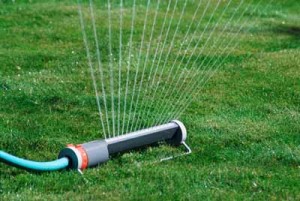Make your own irrigation system
An irrigation system is surely a lot more efficient than watering with a hose or a sprinkler system. The drip irrigation system delivers water directly to the roots of the plants. The system can either be used on the surface of the soil or under it.
First of all you must measure the garden dimensions so you can determine the length of the irrigation tubing. Place the tubing with care, spacing it 12-28 inches in sandy soil and 18-24 inches in clay soil. Cut the irrigation tubing to the required lengths, depending on the size of the garden. Don’t forget to cut the proper number of lateral lines.
The main line is represented by a tube that stretches the entire length of the garden. Connect a hose end connector to one end of the main tube. Insert lateral tubing through T connectors in sections that you must cut. Place each lateral tubing into a T-shaped fitting. Attach a hose cap fitting to each of the lateral line ends. Next, connect the drip emitters to the lateral lines. The emitters must be 12-24 inches apart one from another in sandy soil and 18-24 inches away in clay soil. Attach a fitting to the end of the hose.

 A proper irrigation system will assure a healthy garden. The methods of irrigation are flooding,...
A proper irrigation system will assure a healthy garden. The methods of irrigation are flooding,... A proper irrigation system will assure the right amount of water needed for plants to thrive. To...
A proper irrigation system will assure the right amount of water needed for plants to thrive. To... Irrigation systems require maintenance every once in a while. These repairs should be done befor...
Irrigation systems require maintenance every once in a while. These repairs should be done befor... If you are living in an apartment or have a small yard space and a flat roof, than the rooftop g...
If you are living in an apartment or have a small yard space and a flat roof, than the rooftop g... In many cases, rainwater isn't sufficient to water your plants and trees. Also, sandy soil can m...
In many cases, rainwater isn't sufficient to water your plants and trees. Also, sandy soil can m... An irrigation system is a very important feature for a garden. When planning a garden and an irr...
An irrigation system is a very important feature for a garden. When planning a garden and an irr... There are many methods through which to assure the water needs of your plants. The drip irrigati...
There are many methods through which to assure the water needs of your plants. The drip irrigati... There are many types of irrigation systems, made to decrease the time and labor you need to spen...
There are many types of irrigation systems, made to decrease the time and labor you need to spen...














